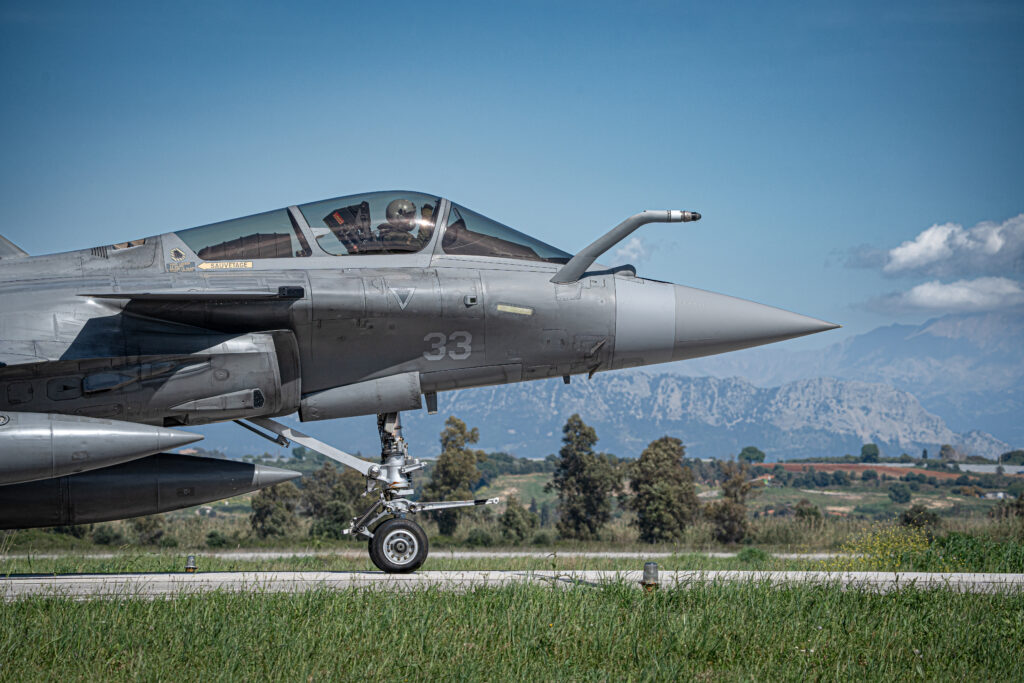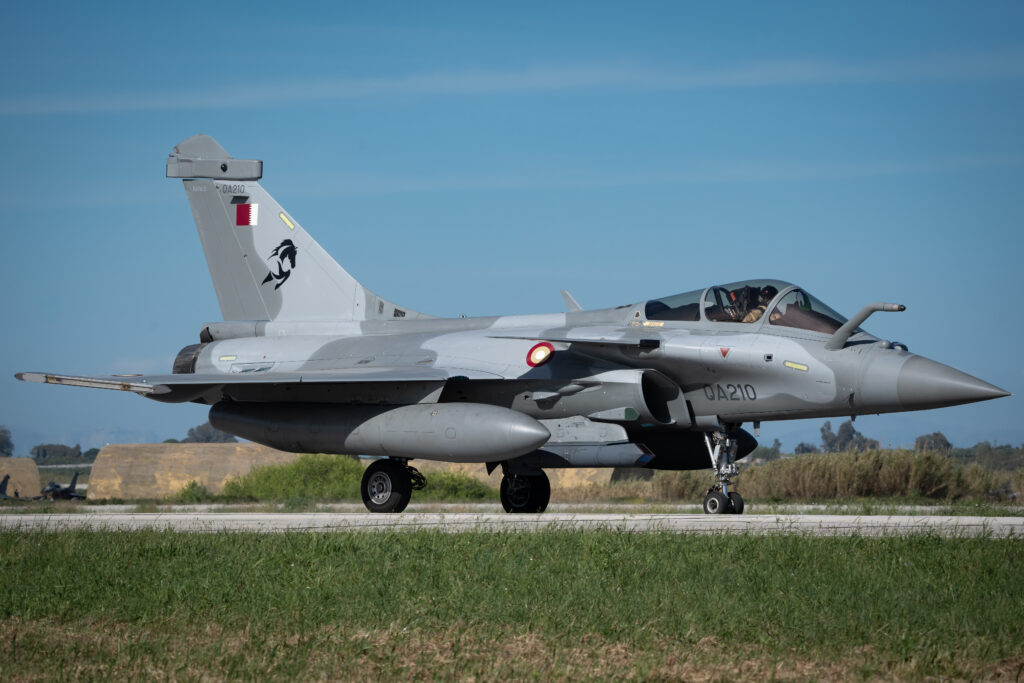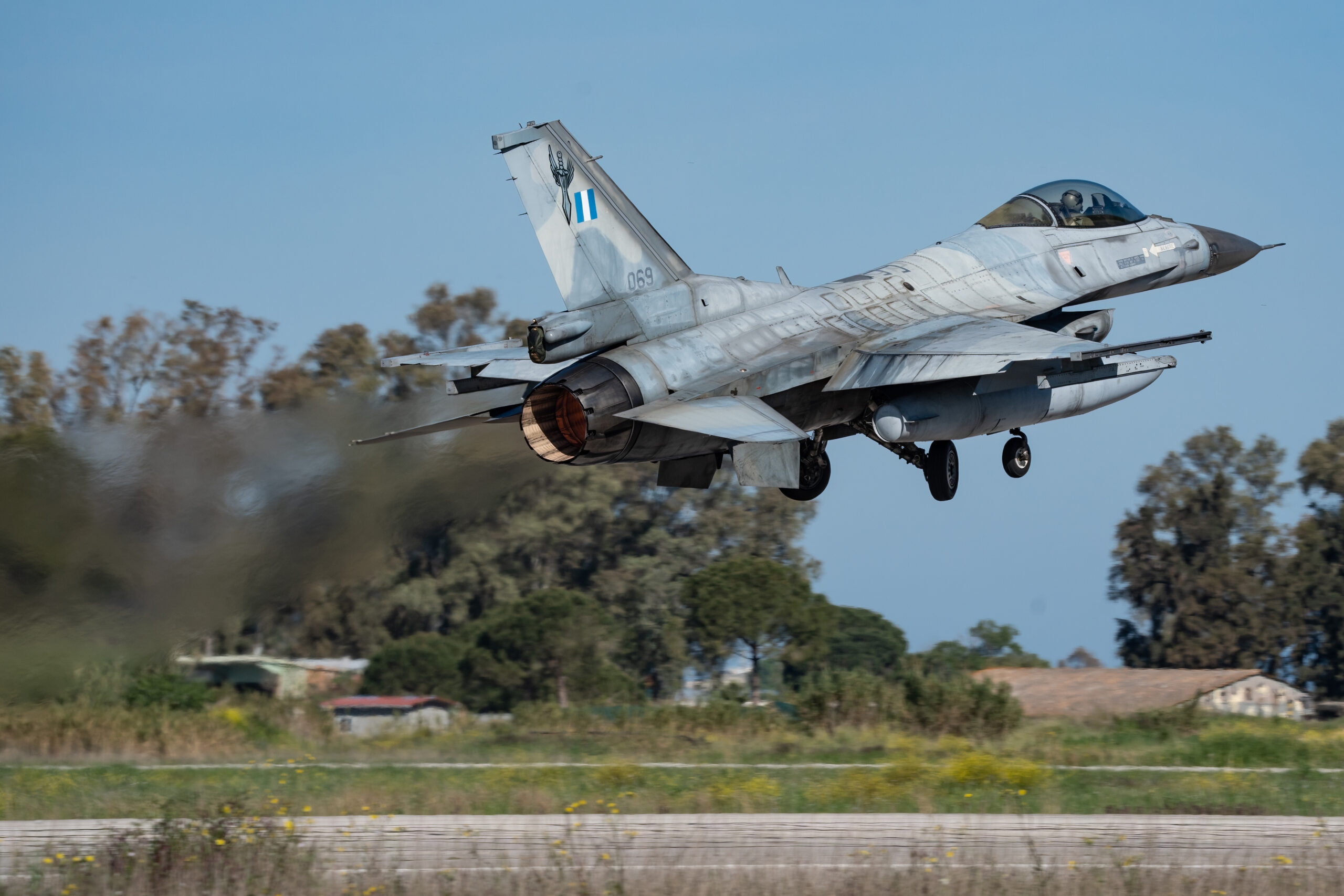

Historical Background
The “INIOCHOS” Exercise had its inception in the late 1980s as a compact tactical exercise, aligning with the Hellenic Air Force Doctrine’s need for combined air operations training. Its early success led to its establishment as an annual event.
The exercise aimed to equip personnel with the skills for planning and executing Combined Air Operations (COMAO) in line with the Hellenic Airforce Doctrine and National Plans. It provided a realistic setting to test and assess operational plans and tactics.
For the exercise’s execution, the Hellenic Fighter Weapons School set up the White Cell at Larissa’s National Center for Air Operations. The White Cell ensured efficient coordination and planning, while participating aircraft operated from Larissa’s 110CW, launching for their missions.
In 2005, the exercise decentralized, allowing participating aircraft to operate from their respective bases. The White Cell’s functions shifted to the Air Tactics Center and the Fighter Weapons School facilities at Andravida Air Force Base, integrating advanced Command and Control systems.
By November 2013, a Single Base Concept was adopted, elevating the exercise to a medium scale. This change expanded operations, aiming for a more realistic, challenging environment with a continuous 24/7 battle rhythm to enhance training intensity.
April 2015 marked the exercise’s transition to INVITEX (Invitation Exercise) format, with the IAF and the USAFE Special Forces (SOF) participating as JTAC.


Participation
Iniochos 2024 involved a large number of Hellenic Air Force assets, such as fighters, including Rafale and F-16 Viper, Air Defence Systems, helicopters, transport and training aircraft.
Additionally, Hellenic Army, Navy and Special Operations assets and personnel contributed significantly to the creation of complex and realistic scenarios across the exercise areas which spread over the Greek mainland and seas.
The invited nations that participated in Iniochos 2024 included:
Cyprus: AW139 Helicopter
France: Rafales and E-3F
Montenegro: B-412 Helicopter
Qatar: Rafales
Romania: F-16s
Saudi Arabia: Eurofighters
Spain: EF-18s
Additionally, Austria and Portugal participated with INTEL personnel and Special Forces while Germany participated with a group of Observers.



Exercise Objectives:
Realistic Training: Create a realistic battle environment with challenging scenarios, exposing personnel to modern threats and real-time injects to simulate the fog of war and friction effect, testing both physical and psychological endurance.
Accurate Assessment:
Utilize onboard and offboard tracking data, sensors, and specialized debriefing software for mission reconstruction by experienced Fighter Weapons School instructors overseeing the debriefing process.

Phases
While the exact phases of Iniochos may vary from year to year depending on the objectives and scenarios planned, a typical exercise might include the following four phases:
- Preperation: During this initial phase, participating air forces arrive at the designated airbase and begin setting up their equipment, personnel, and communication systems. This phase allows the different units to familiarize themselves with the exercise environment and establish coordination mechanisms with their counterparts from other nations.
- Force Transfer: In this phase, the participating forces start integrating their capabilities and assets to form a cohesive multinational force. This involves joint planning, coordination, and execution of complex air operations, such as air-to-air combat, air-to-ground strikes, and air defense missions. Emphasis is placed on interoperability and the ability to operate effectively in a combined, joint environment.
- Operation Phase: This is the main operational phase of the exercise where the integrated multinational force conducts a series of simulated air combat scenarios and missions. These scenarios are designed to test the participants’ tactical skills, decision-making abilities, and operational effectiveness in a challenging and dynamic environment. The focus is on achieving mission objectives while maintaining situational awareness, communication, and coordination among the different air forces.
- Folding Fase After the completion of the operational phase, a thorough debriefing and evaluation process takes place. Participants review the exercise outcomes, analyze their performance, identify lessons learned, and discuss ways to improve future joint operations. This phase is crucial for assessing the effectiveness of the training and enhancing the participants’ capabilities for real-world missions.
Throughout these phases, Iniochos aims to enhance mutual understanding, build trust, and foster cooperation among the participating air forces, thereby contributing to regional security and stability.

Command and Control
The Chief of the Hellenic Tactical Air Force assumed tactical command, with a dedicated cell established at the ATC for exercise coordination. Tactical control was delegated to the ATC Commander.
Missions The HFWS managed missions from scenario planning to debriefing, ensuring coverage of a broad spectrum of HAF missions:
- Air operations versus Integrated Air Defense System (IADS)
- Offensive Counter Air / Airfield Attack
- Air Interdiction / Special Targets (bridges, power stations, vehicles, etc.)
- Anti-Surface Warfare
- Slow Mover Protection (SLOMO)
- Combat Search and Rescue (CSAR)
- Dynamic Targeting (DT) / Strike Coordination and Reconnaissance (SCAR) / Close Air Support (CAS) / Time Sensitive Targets (TST)
- High Value Airborne Asset (HVAA) Protect/Attack


Current Status
Since the inaugural INVITEX in 2015, the INIOCHOS exercise has garnered participation from the USAFE, Israel Defense Forces, the United Arab Emirates Air Force, and the Italian Air Force. There’s growing interest from other countries due to the HAF’s expertise and the exercise’s extensive weapon system involvement across one of Europe’s largest exercise areas. “INIOCHOS” aims to be Europe and the Mediterranean’s premier exercise, offering participants high-level training and a unique experience.

Enhanced Fleet Strengthens the Hellenic Air Force
By 2030, the Hellenic Air Force plans to bolster its capabilities with a fleet of cutting-edge aircraft, phasing out older third- and fourth-generation combat planes like the F-4, Mirage 2000, and block 30 F-16.
Alongside acquiring new aircraft, an extensive upgrade program for the F-16 fleet is in progress. A collaboration between Lockheed Martin and Hellenic Aerospace Industry aims to transform 84 aircraft to the advanced Viper configuration by 2027. This upgrade promises superior safety, networking, and sensor capabilities.
To replace its aging Mirage 2000 fleet, Greece inked a deal with French aerospace giant Dassault Aviation for the purchase of eighteen Rafales in January 2021. This agreement was later expanded with an order for six additional jets, bringing the total to 24, set for delivery by 2025.
Lastly, the US State Department has greenlit a foreign military sales request for Greece to procure forty F-35A Lightning IIs, along with associated equipment.
In summary, the Hellenic Air Force is undergoing a transformative modernization, advancing its capabilities at an unprecedented rate.











